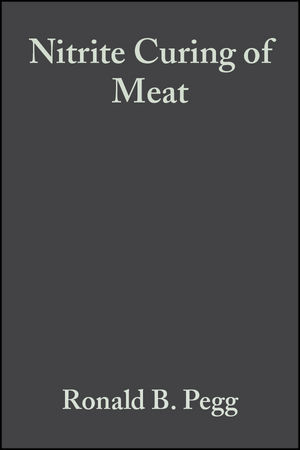Nitrite Curing of Meat: The N-Nitrosamine Problem and Nitrite AlternativesISBN: 978-0-917678-50-9
Hardcover
280 pages
December 2004, Wiley-Blackwell
 This is a Print-on-Demand title. It will be printed specifically to fill your order. Please allow an additional 10-15 days delivery time. The book is not returnable.
|
||||||
Meat has been treated for centuries with rock salt as a means of
preservation. However, only one century has passed since the German
researchers, Polenske in 1891, Kisshalt in 1899, and Lehmann in
1899, discovered that the active component in the curing process
was nitrite. Soon after the role of nitrite as a meat curing agent
was revealed, government regulators placed guidelines on the level
of nitrite and nitrate permitted for use in cured meat
formulations. In the late 1960s and early 1970s, the development of
the so-called "nitrite problem" surfaced because of the detection
of N-nitrosamines in processed meats. The industry was in an uproar
and the issue was of paramount interest to scientists and the
public. A major technical advance in the analytical technique for
N-nitrosamine detection was achieved when Thermo Electron of
Waltham, Massachusetts introduced the thermal energy analyzer
(TEA). This unit allowed the screening of a large number of samples
for nitrosamine with only a minimum preparation. The role of
nitrite in revealing the desired and unique flavor of cured
products, perhaps by suppressing the formation of lipid oxidation
products was another development in revealing other properties of
nitrite. Above all, the antimicrobial role of nitrite, together
with salt, had a major influence on the popularity of
nitrite/nitrate in food preservation.
This book provides a review of the desirable attributes which sodium nitrite confers to meat during processing, as well as drawbacks of nitrite usage, i.e., the presence of N-nitrosoamines. In addition, solutions for the curing of meat without the use of nitrite are presented. An examination of a multicomponent nitrite-free curing system entailing the color, flavor, and microbial protection of such a system is given.



